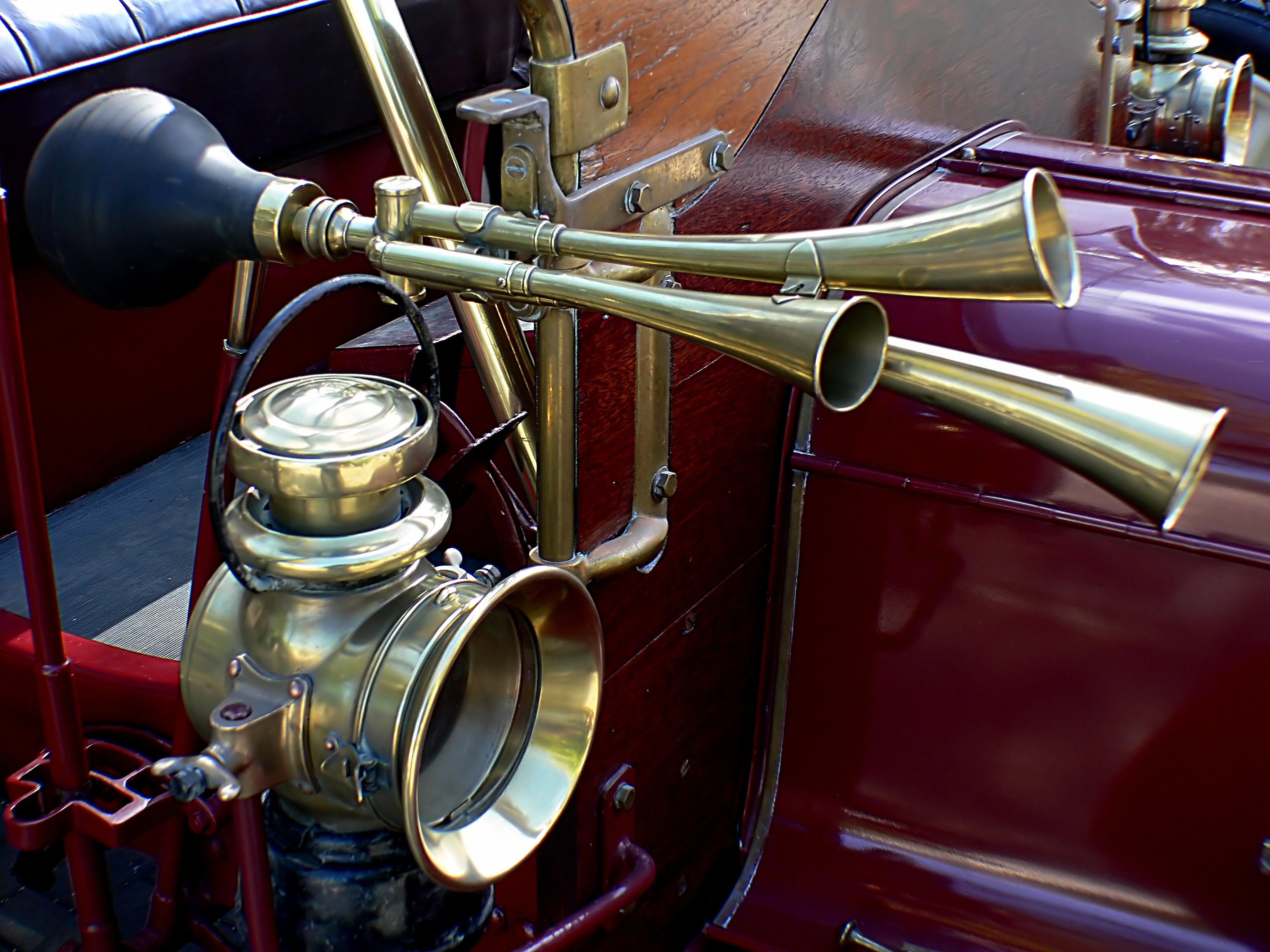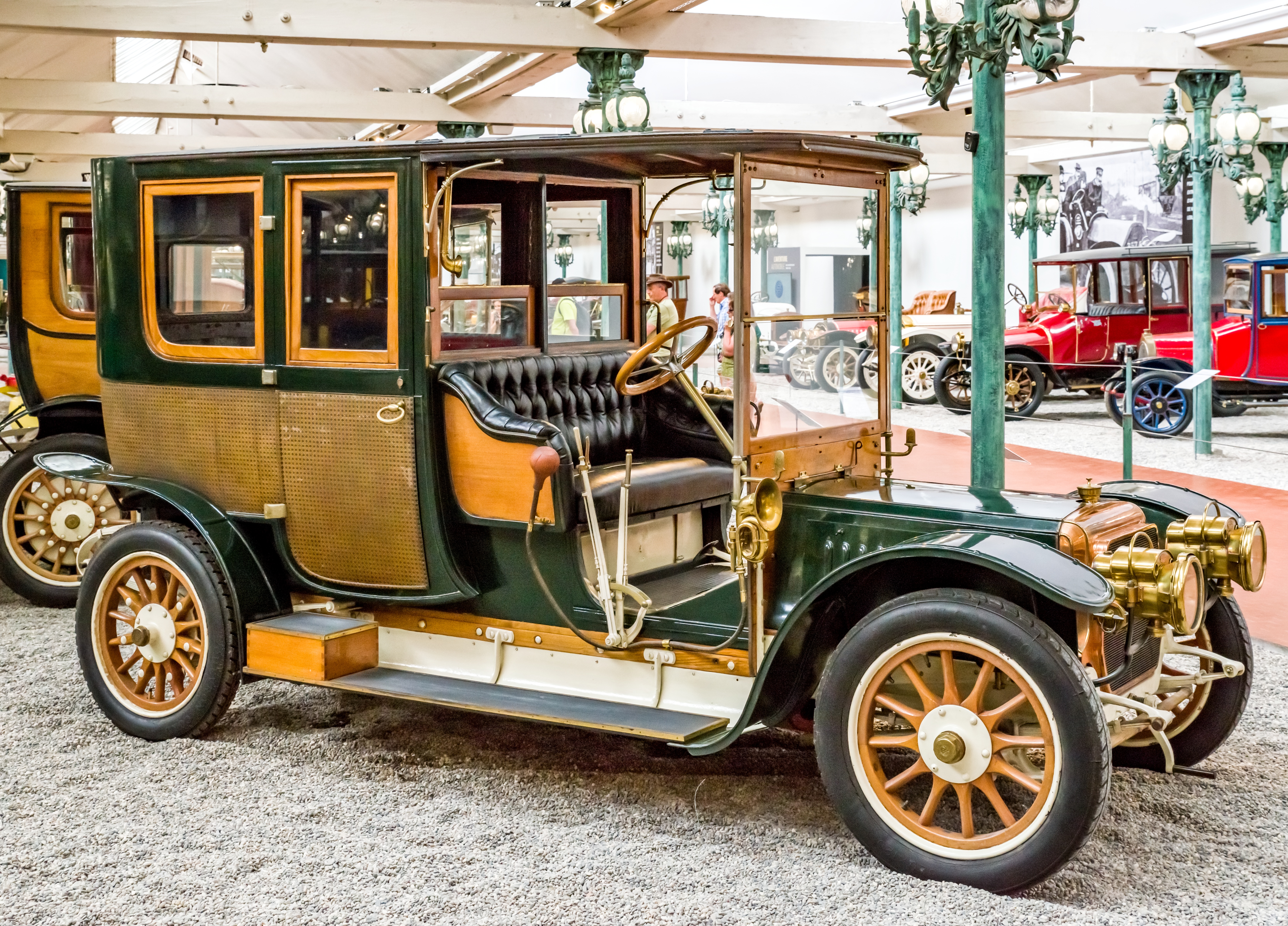
The Brass Era is an American term for the early period of automotive manufacturing (around the end of the 19th century till the First World War), named for the brass fittings used during this time for such things as car horns, lights, radiators and ornaments.
A brief introduction from American automobile historian David Allen Setterland:
"Back in the late 1800s, man was destined to invent a smarter form of travel, other than depending on horses. Horses cost a lot to the owners of having to feed them, shelter them and most important keeping them healthy. Once the internal engine was invented, it was only a matter of time that many men thought to have it power the very carriages, that the horses have been pulling for centuries.
In Europe, in the beginning the first automobiles were built by using the new internal engines to power both bicycles and automobiles. The age some called the horseless carriage age. Others in later years called it the Veteran Age, meaning the oldest and first in the design and building what later became known as the automobile. In America, the Duryea brothers, John Lambert, Elwood Haynes and many more early pioneers either built or hired others to mount a gasoline engine to a carriage, having it driven usually by chain and sprocket, with a tiller for steering. This was known as the coming of the automobile to the world for easier transportation.
So many new entrepreneurs and back yard mechanics got into building these early, simple automobiles. The better more established companies started using brass for decorative pieces both outside the auto as well as under the hood. It might be safe to say, brass being a combination of both copper and zinc that were smelted together, with the result being a golden new color metal that was mostly used in musical instruments and bells. The churches were the places that most could see brass instruments, church goblets and trays or dishes used in their weekly services.
The French Automobile companies could have been the first to use brass addon lights, radiator housing, door handles and many more uses of brass, to give their automobile a more desirable look. Brass being like gold, makes the wealthy not only liking it, but wanting more of it as a decoration on their automobiles to buy. In America, the art of a manufacturer to start using brass, caught on and expanded greatly. Even Henry Ford who built one of the most inexpensive automobiles being the Model " T ", used brass in the early years. This use of brass sold many vehicles, and soon the mixture of horse drawn wagons and the new automobiles driving down country roads, became a bad mix.
It is safe to say, that brass during the brass age of motor vehicles, gave automobiles a look in appearance that many wanted to own. In the United States, brass first started being used around 1905. By 1915, many of the motor vehicle manufacturers were switching from using brass plated or sometimes even solid brass fixtures and addons, to the new nickel plating look. Some called it German Silver, where it was first used. The reason was it took too much time to clean and polish the brass to keep it looking shiny as the day they bought the auto.
Today in the twenty-first century, the brass age is one of the most popular amongst all car admirers. In the different street parades throughout the world, many, both young and old love the brass age vehicles dressed up in their finest gold jewelry as one might call the headlamps, radiator casings and other trim pieces added to give that wealthy look to usually a very well built automobile."

